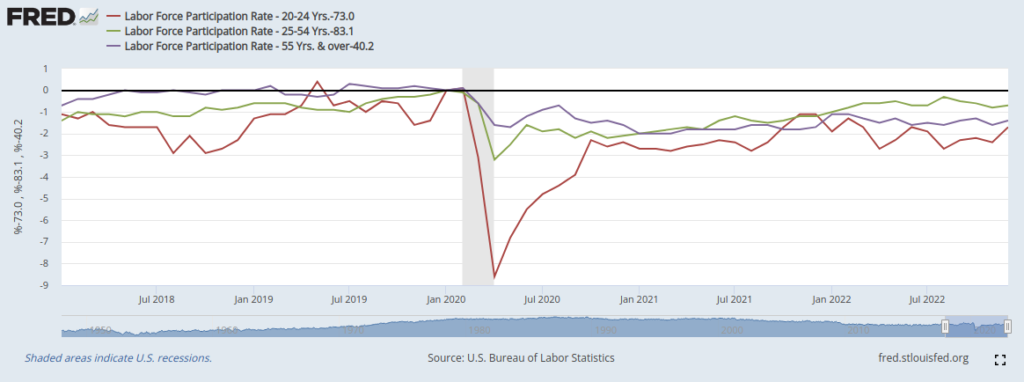We write a great deal about labor shortages in the United States but the problem isn’t unique to the US. The labor shortages in the UK are beginning to become more bleak as each day goes by and while there are many factors for the UK’s predicament, there don’t appear to be any sensible solutions. From Bloomberg:
In one of the most dismal forecasts it has produced, the central bank said the economy is already in recession and will struggle for growth even when the downturn is over. Pre-pandemic levels of output won’t return until 2026, and even a minimal expansion — more than 0.7% a year — would risk a resurgence in inflation.
“There appears to be increasing detachment among those who have left the labor market,” the Bank said in its quarterly Monetary Policy Report. “Over 80% of working age people who are inactive state that they do not want a job, almost 3 percentage points higher than before the pandemic. These people are unlikely to re-enter the labor force.”
Bloomberg.com
And Spain also has labor shortages but have a different approach. From the Financial Post:
Spain will train and employ a group of Moroccan truck drivers as a way to channel migration into Europe’s transport sector affected by an acute labor shortage, a senior Spanish government source told Reuters during a summit in Rabat.
FinancialPost.com
The UK exacerbated their labor shortages through Brexit and the eventual exit of immigrants from the country and those chickens are coming home to roost hard and fast.
As for the United States, the St. Louis Fed released an interesting report on the labor force participation rate.
When the pandemic hit, the sharpest decline in the LFPR was for workers between the ages of 20 and 24. Their LFPR decreased from 73% to 64.4% in 4 months before increasing again. However, at the end of 2022, the LFPR for 20- to 24-year-olds still hadn’t fully recovered and remained 1.7 percentage points below its January 2020 value.
This overall pattern is similar but less extreme for the other age groups. Although no age group fully recovered by the end of 2022, the 25-54 group was closest, at 0.7 percentage points below its January 2002 level. There’s been much discussion of older workers retiring early (and permanently) during the pandemic, and the 55+ group remained 1.4 percentage points below its January 2020 level as of December 2022, with no sign of further recovery.
St. Louis Fed

So where are the missing workers? Did the young missing people move overseas? Young people are increasingly choosing to become digital nomads.
In any event, there will be plenty of profit opportunities due to the labor shortages so stay tuned, stay solvent and stay profitable.